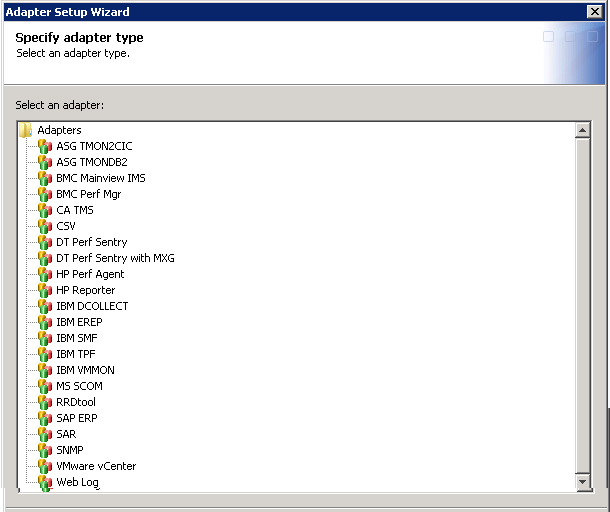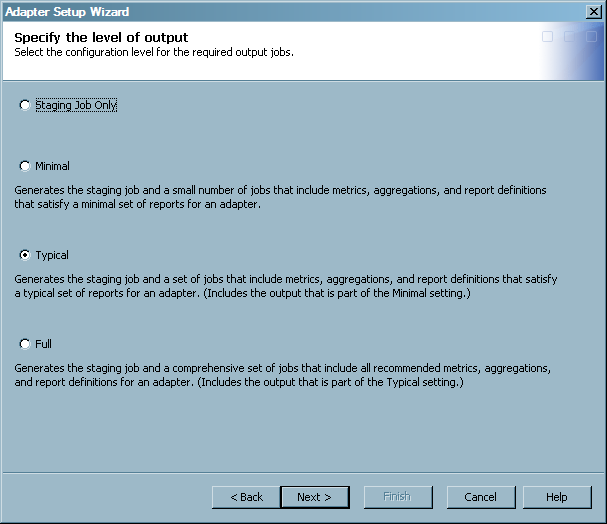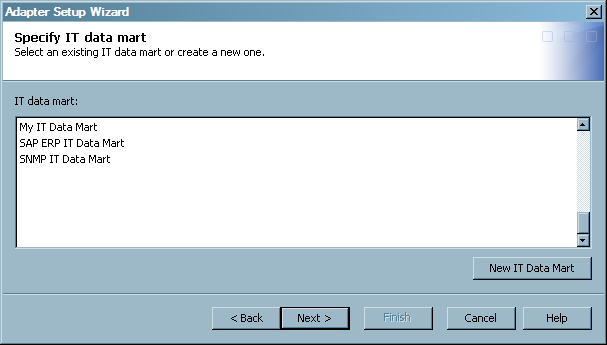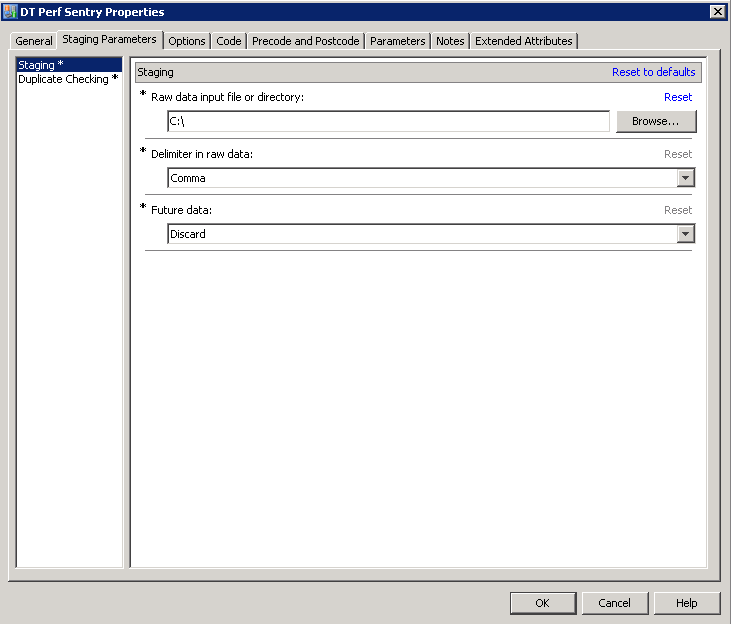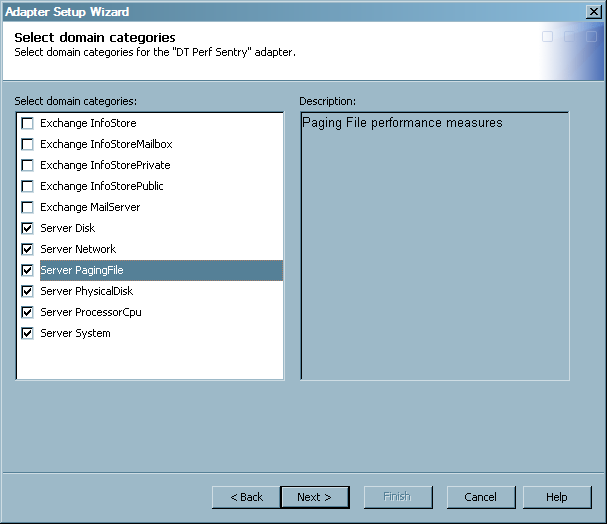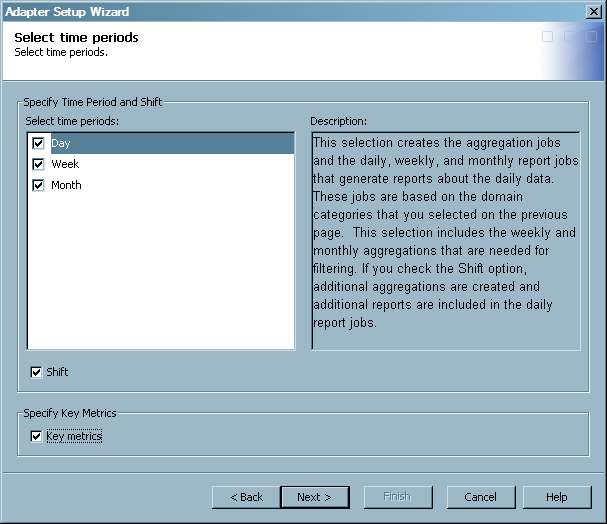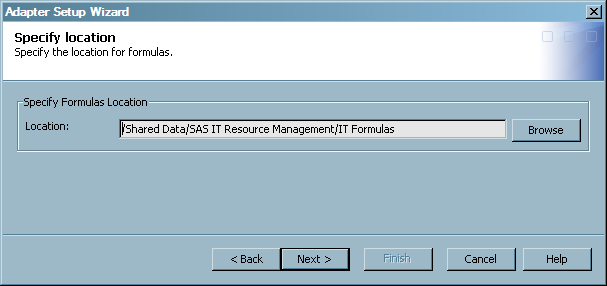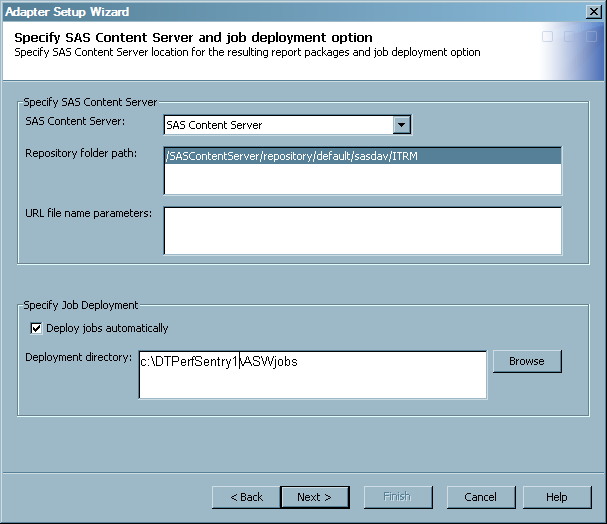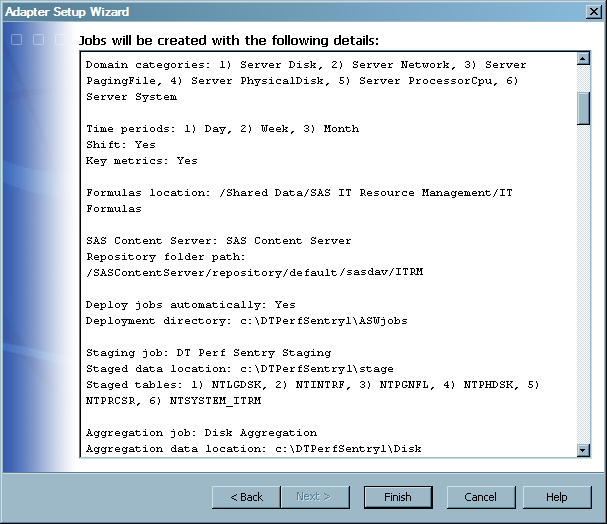How to Use the Adapter Setup Wizard
The Adapter Setup wizard guides
you through several steps that help define staging, aggregation, and
reporting components. These components are used to create the ETL
jobs that process your IT resource data.
The following information
provides brief instructions for completing the Adapter
Setup wizard. For more detailed information about the
specific fields and requirements for each page of the wizard, see
the “Creating Jobs Using the Adapter Setup Wizard” topic
in the SAS IT Resource Management: Administrator’s
Guide.
-
Specify the configuration level that represents the scope of output jobs that you want the Adapter Setup wizard to create.Note: If you are using an adapter that does not include aggregations that are categorized with configuration levels, then the level is automatically set to create a staging job only and this page does not appear.For more information about the metrics and aggregations that are supported for each adapter, see the SAS IT Resource Management metrics documentation. To locate the SAS IT Resource Management documentation, use the Products Index at http://support.sas.com/documentation/index.html.
-
Specify staging parameters for the selected adapter. Staging parameters vary by adapter as they specify the configurations that are required to extract, transform, and load specific raw data into staged tables. The following image is an example of the staging parameters for the DT Perf Sentry adapter:
-
Specify one or more domain categories that you want the Adapter Setup wizard to use when creating the resulting jobs.Note: If you are using an adapter that does not have aggregation and information map jobs available from the Adapter Setup wizard, then the wizard creates only a staging job and skips this page.For more information, see Using Domain Categories.
-
Specify the location of the SAS Content Server where the reports that are generated from the resulting jobs are stored. Also specify whether you want the Adapter Setup wizard to automatically deploy the jobs that it creates.This page does not appear if you selected the configuration level Staging Job Only on the second page of the wizard. In this case, the Adapter Setup wizard creates only one staging job that you must deploy manually.Note: If you are using domain categories that do not result in reporting jobs, then the SAS Content Server options are not available on this page. For more information, see the “Jobs That the Adapter Setup Wizard Creates for Domain Categories” appendix in the SAS IT Resource Management: Administrator’s Guide.The report definitions that the Adapter Setup wizard uses to create the report jobs are stored on the SAS Metadata Server. In addition, the report output that is generated from the report jobs is stored on the SAS Content Server.
-
If you are using domain categories that result in reporting jobs, then accept the default values for the following parameters for the SAS Content Server:specifies the name of the server that is used as the SAS Content Server for storing report definitions and report job outputs.specifies the path within the SAS Content Server where the reports are stored. The default location is
/SASContentServer/repository/default/sasdav/ITRM.URL file name parameters specifies the parameters that pertain to the URL filename, such as Proxy, user ID, or password. For example, the contents of this field could be user='userID', pass='password', and so on. The contents of this field are used to communicate with Gallery Manager. In most configurations, these parameters are not needed.
-
